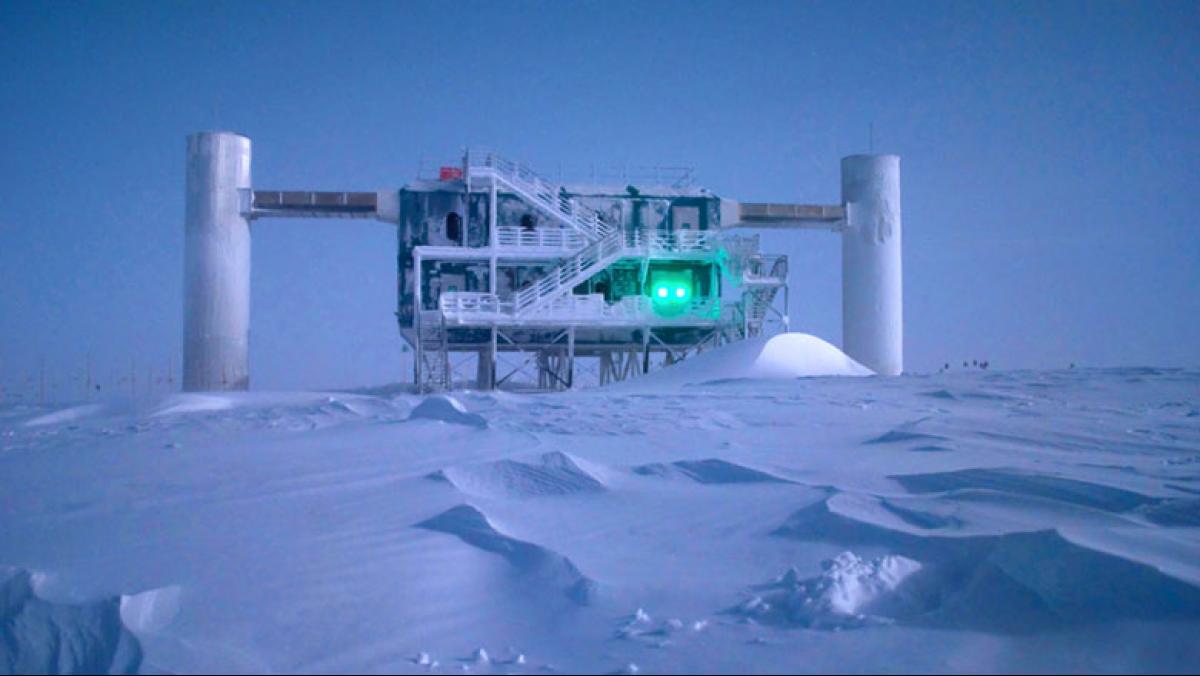The IceCube Neutrino Observatory was built specifically to chase neutrinos, ghostlike fundamental particles formed in the first second of the early universe. Billions of neutrinos pass through every square centimeter of the Earth every second, but the vast majority originate either in the sun or in the Earth’s atmosphere. But some of these nearly massless subatomic particles can carry information about the workings of the highest-energy and most distant phenomena in the universe, thereby expanding our knowledge about the universe far beyond what we’ve learned through telescopes that rely on capturing photons (visible light).
 Built at the South Pole with National Science Foundation funds and assistance from partner funding agencies around the world, the IceCube Neutrino Observatory was completed in December 2010 after seven years of construction under difficult conditions. The Wisconsin IceCube Particle Astrophysics Center at UW–Madison is the lead organization for IceCube, responsible for maintaining and operating the detector to maximize data quality and output.
Built at the South Pole with National Science Foundation funds and assistance from partner funding agencies around the world, the IceCube Neutrino Observatory was completed in December 2010 after seven years of construction under difficult conditions. The Wisconsin IceCube Particle Astrophysics Center at UW–Madison is the lead organization for IceCube, responsible for maintaining and operating the detector to maximize data quality and output.
Unlike traditional observatories that look to the sky, IceCube’s 5,160 digital optical modules are strung along 86 cables embedded in a cubic kilometer of ultra-clear ice (see illustration at right). The ice filters out other high-energy particles and helps IceCube to detect neutrinos when they collide with atoms in the ice and produce tiny flashes of blue light called Cherenkov radiation. Visible to the optical modules, the Cherenkov radiation helps researchers understand the source and intensity of the neutrino.
In November of 2013, IceCube announced the detection of 28 neutrinos orginating from other galaxies. “This is the first indication of very high-energy neutrinos coming from outside our solar system, with energies more than one million times those observed in 1987 in connection with a supernova seen in the Large Magellanic Cloud,” says Francis Halzen, principal investigator of IceCube and the Hilldale and Gregory Breit Distinguished Professor of Physics at the University of Wisconsin–Madison. “It is gratifying to finally see what we have been looking for. This is the dawn of a new age of astronomy.”




